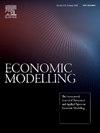Time or money? Induced altruism and provision of old-age care
IF 4.2
2区 经济学
Q1 ECONOMICS
引用次数: 0
Abstract
We study the interrelationship between parental decisions to educate a child and leave a bequest and adult child’s provision of old-age care through time and/or money in an environment where altruism may be induced in children and temporal care is critical for the well-being of the older population. When altruism is inherent between generations, we show that parents have the incentive to under-educate their children to elicit greater temporal care from them during adulthood. When altruism is not innate but can be induced, even financially wealthy individuals, who do not need monetary support from their children, invest in altruism-inducing activities. In a steady state, a threshold return from education ensures that parents educate their children, which, in turn, determines the provision of temporal care by educated children. Steady-state savings, bequests and the provision of monetary support are completely determined by the rate of interest. However, steady-state altruism-inducing investment depends on the type of old-age care a parent expects, contingent on her financial well-being. In an interesting extension, we show that when an education loan market exists, individuals who take a loan to educate their children sufficiently induce altruism to ensure that the educated children repay the education loan, as well as provide for a generous old-age consumption.
时间还是金钱?诱导利他主义和提供老年护理
我们研究了父母教育子女和留下遗产的决定与成年子女通过时间和/或金钱提供养老护理之间的相互关系,在这种环境中,利他主义可能会诱发子女的利己主义,而时间护理对老年人口的福祉至关重要。当代际之间固有利他主义时,我们的研究表明,父母有动机对子女进行低教育,以便在他们成年后从他们那里获得更多的时间照顾。当利他主义并非与生俱来,而是可以诱导时,即使经济富裕的个人不需要子女的金钱支持,也会投资于诱导利他主义的活动。在稳定状态下,教育的门槛回报确保父母教育子女,这反过来又决定了受教育子女提供的临时照顾。稳态储蓄、遗赠和货币支持的提供完全由利率决定。然而,稳态利他主义诱导投资取决于父母期望的养老护理类型,这取决于父母的经济状况。在一个有趣的扩展中,我们表明当教育贷款市场存在时,贷款教育子女的个人会充分诱发利他主义,以确保受教育的子女偿还教育贷款,并提供慷慨的老年消费。
本文章由计算机程序翻译,如有差异,请以英文原文为准。
求助全文
约1分钟内获得全文
求助全文
来源期刊

Economic Modelling
ECONOMICS-
CiteScore
8.00
自引率
10.60%
发文量
295
期刊介绍:
Economic Modelling fills a major gap in the economics literature, providing a single source of both theoretical and applied papers on economic modelling. The journal prime objective is to provide an international review of the state-of-the-art in economic modelling. Economic Modelling publishes the complete versions of many large-scale models of industrially advanced economies which have been developed for policy analysis. Examples are the Bank of England Model and the US Federal Reserve Board Model which had hitherto been unpublished. As individual models are revised and updated, the journal publishes subsequent papers dealing with these revisions, so keeping its readers as up to date as possible.
 求助内容:
求助内容: 应助结果提醒方式:
应助结果提醒方式:


